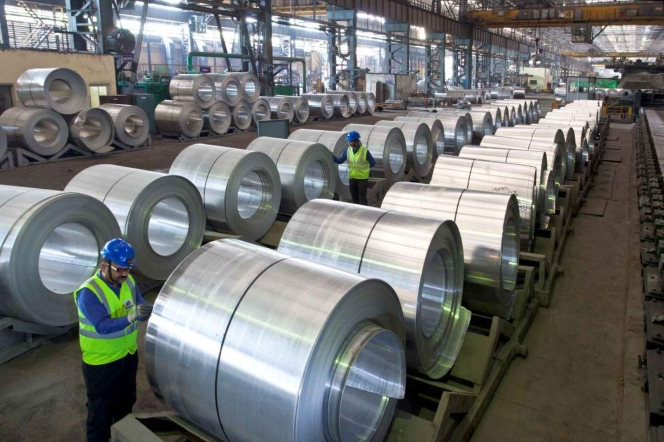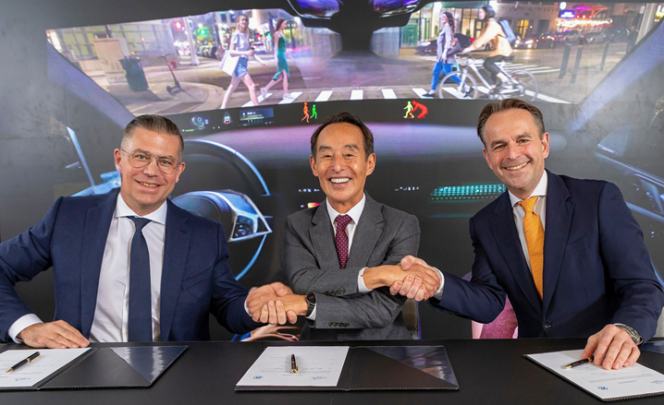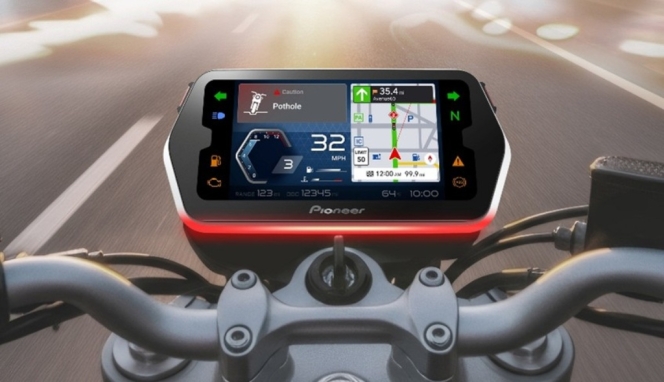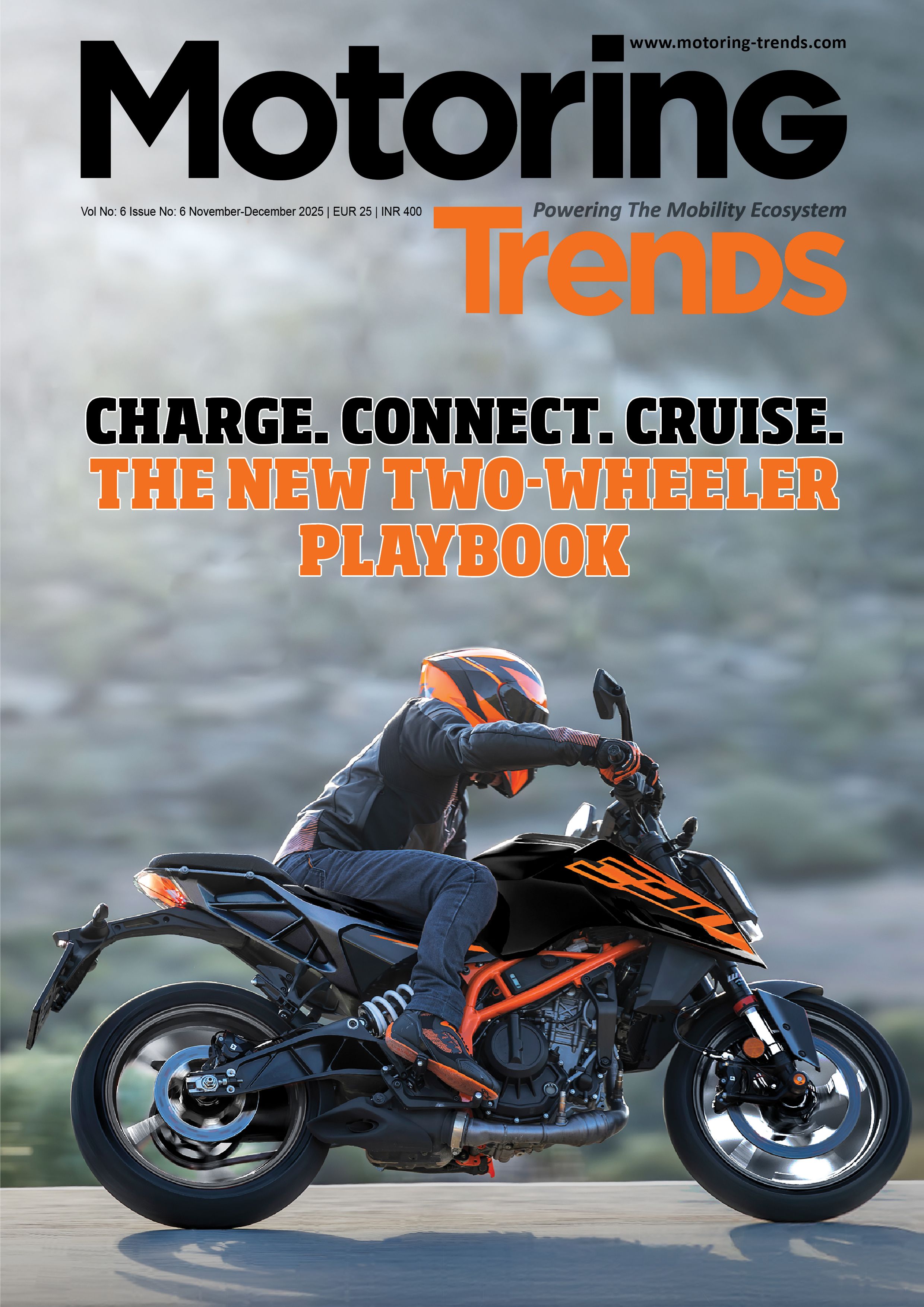Aluminium Can Play A Pivotal Role In The Changing Face Of The Automotive Sector
- By MT Bureau
- October 13, 2020


Currently, India’s foundry market for automotive components is small (only 10 percent of total foundry market — 10 million of cast iron + aluminium) in comparison to USA’s foundry market, which is at 14 million tonnes per annum, of which 3.3 million is aluminium (24 percent). With an increasing focus on higher performance with better safety and lower emission, this gap is going to shrink in the coming years, anticipates Ajay Kapur, CEO – Aluminium & Power Business, Vedanta Aluminium.
“There is immense scope for Indian aluminium producers to tap into the emerging market in the automotive sector,” said Kapur. Vedanta Aluminium was the first in India to supply PFA (primary foundry alloy) to the domestic auto sector. Before, the launch of PFA by the company, India’s entire PFA demand was being met through imports, even though the country has the world’s second-largest aluminium production capacity. Looking at the potential of the auto market and its import dependency, the company decided to tap into the opportunity and develop indigenous capabilities at its state-of-the-art facilities in Jharsuguda and BALCO to meet that demand. Currently, the company has a PFA casting capacity of 240KT spread across its plants in Odisha and Chhattisgarh.
“Primary aluminium producers develop PFAs which are customised to suit the exact needs of automakers in terms of performance, strength, durability, etc. Significant R&D and technical expertise go into developing PFAs, resulting in excellent metal quality and outstanding castability, which makes these alloys the preferred choice for the automotive industry,” explained Kapur. PFAs are ideal for aluminium alloy wheels, cylinder heads and brakes. The company also anticipates that with an increased focus on reduction of vehicle weight with higher safety performance, automotive parts critical to safety will be made from PFA instead of cast iron to offer higher strength and nearly double absorption of crash energy. “Besides, aluminium PFAs will always have the added advantage of cost-saving on fuel and maintenance,” added Kapur.
Vedanta Aluminium has started steadily supplying PFAs to OEMs and ancillaries in wheel manufacturing in India. “Our proactive move to expand business on this front helped us on-board some of the most reputed equipment manufacturers and auto ancillaries as our clients, and we have received a very positive response from them. Encouraged by that, we will soon look to expand our alloy portfolio for supporting manufacturing of cylinder heads, ABS brakes and certain key applications where traditional materials can easily get substituted with aluminium alloy. We are also exploring prospects of long-term investments by auto ancillaries near our aluminium smelters so that they may leverage cost savings in terms of freight, re-melting and electricity,” said Kapur.

The company, according to him, is well-positioned to cater to the current and emerging needs of the Indian auto sector, offering a broad range of products that find usage across the automotive value chain – from casting to extrusion. “When choosing suppliers for alloys, automotive players should look for companies having high-quality casting facilities, sophisticated R&D facilities and technological prowess for developing customised high-performance alloys for their specific needs, and finally, having robust after-sales technical support; USPs that have earned us the trust of our clients,” he added.
Aluminium is the second most used metal in the world after steel, today, and, according to Kapur, it has the potential to become the most important commercial metal in the future. “Most developed countries have already designated aluminium as a core industry. Aluminium holds strategic importance for the economy as the metal of choice for all kinds of transportation, power, aerospace, defence, building and construction needs. So, given the role it plays in supporting the core sectors meet the Government’s ‘Make in India’ initiative, we expect its application to only expand with time,” said Kapur.
The metal’s usage in the transportation sector has been rapidly increasing as it offers an environment-friendly and cost-effective way to increase performance, boost fuel economy and reduce emissions while maintaining or improving safety and durability. Aluminium is substantially lighter than its counterparts, offering a significant reduction in weight, which has a direct impact on fuel consumption and carbon emissions.

The metal also has a higher strength-to-weight ratio compared to traditional materials that enable it to absorb twice the crash energy of mild steel, ensuring that vehicular performance enhancements do not come at the cost of safety. “Further, nearly 90 percent of all the aluminium used in a vehicle is recycled at the end of its lifecycle. The energy required to recycle aluminium is only five percent of the energy required to produce the metal. With all these advantages, aluminium can play a pivotal role in the changing face of the automotive sector,” said Kapur.

Aluminium alloys are used by the Indian auto industry majorly as alloy wheels. Around 95 percent of two-wheelers include aluminium, averaging at 7kg per bike, taking total consumption of aluminium alloy in this segment to 115KTPA (kilo tons per annum). Whereas, only 20 percent of four-wheelers use aluminium, majorly in high-end models, which max out at 40kg per car. “The crux of the matter is, in India, we are yet to explore more applications of aluminium in the automotive industry akin to our global peers. For example, in developed countries, around 21 PFAs are used in the automotive segment to achieve light-weighting in the form of various auto parts and components. In India, we majorly use PFAs only for manufacturing alloy wheels and to some extent, for cylinder heads. So, there is immense potential for usage of aluminium in other auto parts like engine, suspension, front end carrier, instrument panel support, rear frame, chassis and many more,” said Kapur.
Shortly, the company expands its alloy portfolio for supporting manufacturing of cylinder heads, ABS brakes and certain other applications where currently steel or iron is being used but can be substituted by suitable aluminium alloys to provide additional benefits. As the market for aluminium alloys in automotive segment expands with inclusion of newer applications, Vedanta Aluminium will look for opportunities to leverage its technological expertise and R&D capabilities to develop products customised to the needs of the market. Vedanta Aluminium is also open to collaborating with the downstream industry, to unlock the entire potential of aluminium used in the auto sector and cater to the rapidly evolving aluminium requirements of the Indian automotive industry.
In the Indian automotive market, one of the biggest challenges faced today is the increasing imports of auto components from China and other countries. The size of the auto components imports was USD 17.6 billion in FY19. Asia, the largest source of imports for Indian auto-components, had a share of 61 percent followed by Europe at 29 percent; North America at eight percent; Latin America and Africa at one percent each in FY19. China, with 27 percent, enjoyed the status of the largest exporter in the Indian automotive market.
“The potential of the aluminium industry should be acknowledged and recognised as a core sector with a National Aluminium Policy that will encourage, protect and boost the domestic aluminium industry. The domestic capability needs to be harnessed for critical sectors of national importance like defence, aerospace, aviation, transportation, infrastructure, electrification, housing, etc. We must make the vision of ‘Make in India’ a ground reality in these sectors, leveraging the potential of the entire aluminium value chain, from mining to end usage. Besides enhancing domestic capacity and reducing import dependency and subsequently trade deficit, it will also generate huge employment opportunities in our country which has a deep talent pool that needs to be capitalised for the realisation of our vision of a USD5 trillion economy. We are on the right path, but there is still a long way to go,” said Kapur.

The global economy is swiftly moving towards a cleaner, greener and more sustainable lifestyle. For more than a decade now, concerns about fuel efficiency have encouraged OEMs to replace steel with aluminium in vehicle bodies, doors, trunks, hoods, bumpers, crash boxes, brakes and wheels. With the advent of electric vehicles (EV), OEMs worldwide are focusing on exploring and applying new uses of aluminium. The need for lightweight battery casings and heat exchangers in electric vehicles, combined with autonomous vehicles’ demands for high visibility and structural integrity, is expected to exponentially increase the use of aluminium in cars, trucks and buses from now on. “Using aluminium in EVs has several advantages, foremost amongst which is the distance travelled per charge. Lighter the vehicle, the longer its range. Coming to better battery life, thanks to the metal’s thermal and anticorrosion properties, aluminium is ideal for battery frames. Demand for aluminium will also rise on account of infrastructure for serving EVs since the metal is commonly used as a housing material for EVs charging stations as well. While India is waking up to this future of automobiles, partnerships between different automotive industry bodies/institutions and auto companies for sharing knowledge and expertise will help fast-track development of electric vehicles in the country,” said Kapur. MT
HMC E-Valley And KPIT Technologies Partner For Micromobility Centre Of Excellence
- By MT Bureau
- December 24, 2025

HMC E-Valley (HIVE) and KPIT Technologies have signed a Memorandum of Understanding (MoU) to establish an Independent Centre of Excellence (CoE) in Delhi-NCR. The facility will provide design and engineering services for global micromobility and L-category electric vehicle (LEV) manufacturers, including those producing e-bicycles.
The partnership targets the multimodal mobility market, specifically first-mile and last-mile connectivity solutions such as e-scooters. Industry data indicates that over 50 percent of current travel occurs within these last-mile segments.
The collaboration combines manufacturing and software expertise to develop LEV platforms.
As per the understanding, HIVE will manage business development, client engagement, prototyping and manufacturing enablement. While KPIT will lead solutioning, engineering delivery, programme management, design and software systems integration.
The CoE is designed to create end-to-end capabilities for the LEV segment, utilising KPIT’s mobility technology and HIVE’s manufacturing and supply chain infrastructure.
Pankaj M Munjal, Chairman, Hero Motors Company, said, “The light electric vehicle industry is at a pivotal juncture, demanding a fusion of cutting-edge hardware and smart software. This partnership with KPIT is a powerful convergence of those forces, signifying HIVE’s deep commitment to redefining urban mobility by delivering the next generation of high-quality, sustainable micromobility solutions globally.”
Kishor Patil, CEO & Managing Director, KPIT Technologies, said, “The future of mobility, even at the micromobility level, is defined by intelligent software and seamless systems integration. KPIT’s deep domain expertise in mobility technology will be crucial in equipping the Center of Excellence to develop world-class, cost-effective, and safe LEV platforms. We are excited to combine our software leadership with HIVE’s manufacturing excellence to accelerate the journey toward safer, smarter, and cleaner transportation.”
The agreement aims to accelerate the development of LEV solutions for the global market by integrating AI-driven mobility software with scalable manufacturing.
- ZF Group
- Samsung Electronics
- ADAS
- Harman International
- Christian Sobottka
- Mathias Miedreich
- Young Sohn
Harman To Acquire ZF Group’s ADAS Business For EUR 1.5 Billion
- By MT Bureau
- December 23, 2025

Harman International, a subsidiary of Samsung Electronics, has entered into a definitive agreement to acquire the Advanced Driver Assistance Systems (ADAS) business from ZF Group for EUR 1.5 billion.
The acquisition includes ZF's automotive compute solutions, cameras, radars and ADAS software. Approximately 3,750 employees across Europe, the Americas and Asia are expected to transfer to Harman upon completion of the deal, which is scheduled for the second half of 2026.
The move is part of Harman’s strategy to transition towards software-defined vehicles (SDV). By combining ZF’s ADAS technology with its own digital cockpit products, Harman aims to develop centralised compute platforms. This architecture is intended to link safety and assisted driving functions with in-vehicle connectivity and intelligence on a shared platform.
The integration is designed to reduce system complexity for car manufacturers (OEMs), allowing for more efficient innovation cycles and the scaling of context-aware vehicle experiences.
Christian Sobottka, CEO and President, Harman’s Automotive Division, said, “The industry is at an inflection point where safety, intelligence, and in-cabin experience must come together through a unified computing architecture. With this agreement, we take a strategic step to expand our portfolio with complementary ADAS capabilities that unlock a new class of cross-domain experiences ranging from perception-informed audio cues to more personalized, situation-aware driving. Combined with Harman’s long-standing automotive expertise and supported by Samsung’s broader technology leadership, this positions us to help OEMs design the next generation of intelligent, empathetic, and connected vehicles.”
Mathias Miedreich, CEO, ZF Group, said, “With Harman, we have found the ideal partner to fully unlock the growth and innovation potential of our ADAS business. At the same time, this deal makes an important contribution to reducing our company’s debt and allows us to focus our resources on the core technologies in which ZF is a global leader.”
Young Sohn, Chairman of the Board at Harman, added, “Since acquiring Harman in 2017, the company has scaled its automotive and audio business from USD 7 billion to more than USD 11 billion today. Adding ZF’s ADAS capabilities builds on that momentum. Harman will further expand its technology foundation to deliver safer, more intelligent, and more intuitive in-vehicle experiences. This acquisition reinforces Harman’s leadership in the industry’s transformation and underscores Samsung’s long term commitment to the future of mobility.”
Following the close of the transaction, Harman will align its engineering and ADAS teams to accelerate the development of next-generation platforms. The companies have committed to maintaining support for existing programmes during the transition period. Carolin Reichert, Chief Strategy Officer of HARMAN, noted that the deal represents a ‘major milestone’ and demonstrated the company's ability to execute a ‘complex carve-out.’
Pioneer To Reveal 'Ride Connect' Motorcycle UX At CES 2026
- By MT Bureau
- December 23, 2025

Pioneer Corporation has announced it will unveil Pioneer Ride Connect, a user experience (UX) solution for motorcycles, at CES 2026 in Las Vegas. The system is designed for the production of connected clusters and relies on software updates to provide features to riders.
The solution is the result of a technology collaboration with HERE Technologies. It integrates the HERE SDK, a cloud-based mapping and navigation kit covering more than 120 countries, to provide location-based services for the global two-wheeler market.
Pioneer Ride Connect incorporates several technologies intended to manage hardware costs and smartphone battery life:
- BLE-based Screen Projection: The system uses Bluetooth Low Energy (BLE) to project map images and service information from a smartphone onto the onboard cluster. This method reduces the processing power required by the motorcycle's hardware and lowers smartphone power consumption.
- HMI and AI Integration: The platform features Voice Tap, a voice-based Human-Machine Interface (HMI) for hands-free operation. Edge AI is used to share real-time traffic, weather and hazard data.
- Global Navigation: Through the HERE SDK integration, the system provides routing and traffic information optimised for motorcycles. It includes an offline mode for use in areas with limited network connectivity.
The development follows a partnership between Pioneer and HERE Technologies established in December 2024. The HERE SDK allows for the development of location-aware applications featuring routing and geocoding services across Android, iOS and Flutter platforms.
Pioneer stated that the integration of these technologies serves as a foundation for providing connected services to two-wheeler manufacturers and riders globally.
Seiji Tanezawa, Executive Officer of Pioneer, in charge of business development and strategic alliances, said, “Pioneer Ride Connect is a revolutionary platform that continuously provides software-based upgrades to motorcycles’ UX. By combining Pioneer’s industry-leading expertise in designing a compelling UX with HERE Technologies’ globally accessible Location Intelligence platform, Pioneer Ride Connect transforms the concept of smarter and safer connected two-wheelers into a tangible reality. I’m delighted to unveil our leading-edge technology and ambitious vision at the upcoming CES 2026.”
Deon Newman, Senior Vice-President & General Manager, Asia Pacific, HERE Technologies, said, "Pioneer’s ‘Ride Connect’ brings a smarter, safer motorcycle experience to life - and we’re proud to power it with HERE SDK. Together, we’re making connected services accessible to riders across global markets, with reliable navigation and motorcycle‑optimised routing that work in dense cities to remote mountain roads. It's a meaningful step forward for connected mobility.”
Kinetic Watts & Volts Partners With Jio Things For Connected EVs
- By MT Bureau
- December 22, 2025
Kinetic Watts & Volts (KWV), the electric mobility arm of Kinetic Engineering, has entered a technology partnership with Jio Things, a subsidiary of Jio Platforms.
The collaboration will integrate voice-assisted controls, IoT-enabled digital clusters and connected vehicle technologies into Kinetic’s upcoming electric two-wheeler range.
The partnership aims to deploy a suite of digital features for Indian riders, utilising Jio’s IoT ecosystem, which includes hardware, cloud infrastructure and device management.
The collaboration will introduce several capabilities to the Kinetic EV platform:
- Voice Assistance: Interaction for vehicle functions.
- Smart Clusters: Digital instrument panels providing real-time data and infotainment.
- Telematics: Cloud-based analytics for performance monitoring and diagnostics.
- Fleet Management: Tools for commercial operators to track and manage vehicle assets.
The connected platform will be embedded across future KWV models to provide a standard digital experience across different customer segments.
Ajinkya Firodia, Vice-Chairman & Managing Director, Kinetic Watts & Volts, said, “Kinetic has always stood for democratizing mobility and innovation. With this partnership, we now extend that commitment into digital mobility, bringing voice assistance and connected features to everyday riders, so technology becomes truly intuitive and useful. This collaboration also stays true to our motto of ‘Easy’ a philosophy already visible in practical features such as Easy Key, Easy Flip and Easy Charge; and now strengthened with seamless digital experiences that simplify ownership for our customers.”
Ashish Lodha, President, Jio Platforms, said, “Our partnership with Kinetic exemplifies our vision to build a truly connected automotive ecosystem in India. By bringing Jio’s voice assistance and IoT capabilities to the two-wheeler segment, we are not just upgrading vehicles; we are redefining the interaction between man and machine, bringing the benefits of smart mobility to every Indian rider.”
The partnership seeks to combine Kinetic’s manufacturing experience with Jio’s digital infrastructure to make connected electric vehicles more accessible. Objectives include improving rider safety, increasing digital uptime and providing data analytics for fleet operators.






Comments (0)
ADD COMMENT